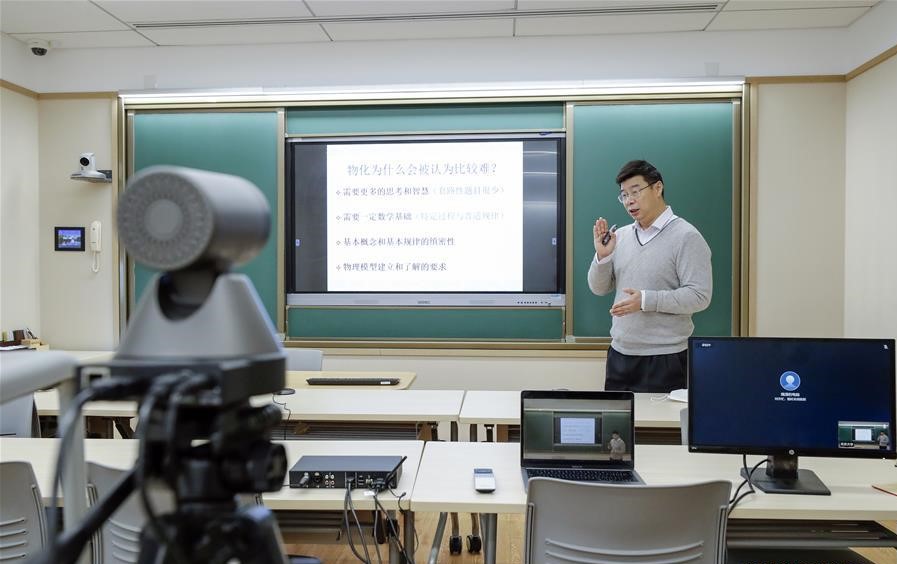Rise of MOOCs in China Offer More Educational Opportunities amid Pandemic

As the popularity of MOOCs increases and the success of platforms starts to demonstrate to the world, more and more universities will offer MOOCs and a greater number of Chinese platforms will also emerge and compete with one another.
The ongoing COVID-19 pandemic has heightened interest and encouraged exploration with regard to the potentials and possibilities of online education. In particular, there has been drastic growth of massive open online courses (MOOC) growth in this most extraordinary year.
Apparently, children and college students are not the only ones turning to online education, but also many thousands and millions of adults have signed up as well.
As always, with crises come with opportunities and accelerations. Many MOOC providers, such as Coursera, Udacity and edX, are showing how education can sustain and expand, despite the contemporary ever-changing external environment. Among all these MOOC platforms, one can find a wide range of short teaching and learning videos, interactive discussion forums, as well as online mentoring and tutoring initiatives taking place all the time.
The fundamental mission of MOOC is to open up education. In fact, many of these courses are free of charge, and some even come with the granting of certificates or degrees that allow participants to earn relevant credentials. It is hoped that educational equality could be maintained when those individuals coming from a less privileged background are still able to acquire relevant knowledge and skills through these accessible platforms.
Unlike conventional programs and courses that require strict planning and rigorous auditing, these MOOC courses are usually far more comprehensive and flexible, allowing curriculum planners and designers to match these courses with the most up-to-date student demands and employment trends in the workplace. This offers potential for better preparing people with the relevant traits for an ill-defined future in the globalized generation.
As China is currently the largest higher education market across the globe (25 million students at undergraduate level) and also having the largest Internet population worldwide (390 million users), there is no doubt that the MOOC concept has a substantially strong potential.
In October 2013, Tsinghua University with different Chinese officials and partner institutions officially announced the establishment of the XuetangX as the very first MOOC platform in the country. Currently, it offers more than 1,500 courses from both Chinese institutions like Peking University and Fudan University in Shanghai, as well as international institutions like MIT and Berkeley.
Another leading MOOC platform in China is the Chinese University MOOC, which was launched in May 2014. Currently, the platform delivers over 2,500 courses developed by more than 350 universities, organizations, and companies around the world and covering a wide range of specialties, themes, and genres.

In fact, the rise of the MOOC is good news to many Chinese universities as they could further expand their global influence. Through these platforms, academics can show their own insights and publications on a global level. Various universities can also boost their global ranking and competitiveness by broadening curriculum and designing courses that satisfy international standards.
Another strength is that better synergy can be attained across different renowned universities around the world. One can see that there are now far more regional and international cooperative opportunities for Chinese and international universities. For instance, they are now offering joint courses in topics of common strengths and designing curricula that involve the first-class academics around the world.
Nonetheless, there are still concerns that MOOCs might not be systematic and rigorous enough when compared to conventional face-to-face courses. There is some concern over a lack of coordination and organization among MOOCs. There is too much repetition and overlap in the development of online courses, meaning that more comprehensive and strategic planning at government level is needed. It is crucial for the government to outline a clearly articulated vision so that institutions could find their niches and fit their roles.
Another concern is the lack of interactive contact with academics, which could discourage students from pursuing intellectual inquiry. Meanwhile, as MOOCs are entirely online, students also need to remain self-regulated throughout their learning trajectory, which is hard when only a small minority of the students end up finishing their courses eventually.
Given the online nature, there are also worries of possible student cheating and violation of material copyright rules. All these are obstacles that should be overcome in order to turn MOOC into a mainstream trend in the future.
As the popularity of MOOCs increases and the success of platforms starts to demonstrate to the world, more and more universities will offer MOOCs and a greater number of Chinese platforms will also emerge and compete with one another.
It is hoped that such positive competition could further motivate universities to develop courses that benefit student learning and their own higher education development in the long run. Given the ongoing COVID-19 epidemic, it is likely that MOOCs will continue to change the entire educational landscape.
Mathew Wong is an assistant professor in the Department of Social Sciences at the Education University of Hong Kong.
 Facebook
Facebook
 Twitter
Twitter
 Linkedin
Linkedin
 Google +
Google +










